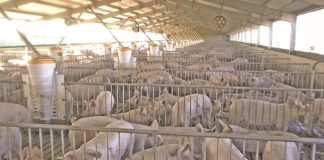
Photo: Pixabay
This is despite the sharp rise in input costs, according to the US Department of Agriculture’s recent Farm Income forecast, published three times a year.
Farming income was forecast to be 14% higher than the previous year and twice as high as three years ago during the US’s ‘trade war’ with China.
READ Zimbabwe wheat crop volumes hit record
The value of farming assets was expected to be 10% higher this year, following a similar 10% increase in 2021, which the USDA said was the second-highest ever annual farming income for that country.
It was further expected that farming debt levels would have risen slower, with the debt-to-asset ratio, a measure of financial health, anticipated to decline to 13,05%, the first such decline since 2011.
Overall income from crops and livestock was expected to reach US$541,5 billion (R9,27 trillion), up 24% or nearly US$106 billion (R1,8 trillion) compared with last year. The increase in farming income could mainly be attributed to higher prices, according to USDA economists.
READ Boran bull smashes SA breed record with R2,3 million price tag
Maize, wheat, and soya bean were expected to earn an additional US$37 billion (633 billion) this year compared with the previous year.
In addition, higher prices for broiler chickens were expected to boost income by 55%, while revenue from cattle, pigs, turkeys, and milk were also expected to increase.
“Cash receipts for chicken eggs are expected to more than double,” the USDA said.
The forecast indicated that commodity prices reached new heights when Chinese importers returned to the US market in the autumn of 2020, and then spiked again following Russia’s invasion of Ukraine in February this year.
READ Budgeting basics: Every successful farm has one
The conflict disrupted grain and fertiliser exports from the Black Sea region, which had a significant impact on global supplies, due to Ukraine and Russia being major wheat exporters, and Russia being the world’s top exporter of fertiliser.
At the same time, the USDA report said it was forecast that this year’s production costs would show a 18% increase, to reach a record US$442 billion (R7,6 trillion).
“This would represent the largest year-on-year dollar increase in nominal terms on record.”
The report added that prices in nearly every category of input had increased, with the rise in the prices of fertiliser, lime, and soil conditioners amounting to 47%, while fuel and oil prices had risen nearly 48%.
Debt servicing costs rose by 41% due to higher inflation in the US, while prices in the largest agriculture category, livestock feed, rose by 17%.
Meanwhile, farming associations were appealing to lawmakers to increase the reference prices used to calculate crop subsidies, in light of the new farming bill that would be introduced in 2023. Organised agriculture also called for increased protection through the government-subsidised crop insurance programme.












